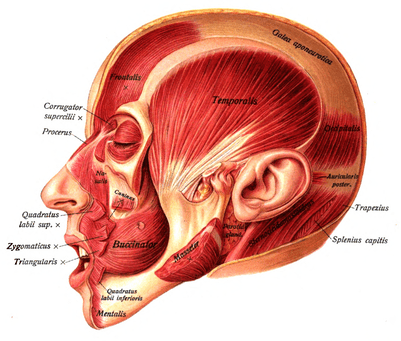The Temporoparietal Fascia and Your Neck Pain and Headaches

StatPearls describes itself as providing “peer-reviewed and PubMed-indexed review articles” created for the express purpose of helping healthcare professionals “identify knowledge deficits and quickly review to acquire or refresh medical knowledge…. to provide health professionals with the educational tools needed to identify weaknesses and stay current.”
They have articles on almost any topic you can imagine and you can sign up to get information on topics you are interested in in your inbox on a daily basis. One of the recent articles I received was called Anatomy, Head, Fascia, Temporoparietal, and if you are one of the millions who suffer with CHRONIC NECK PAIN, HEADACHES (MIGRAINES included), or SKULL PAIN / FACE PAIN, this information will be right up your alley.
The authors, Dr. Carl Shermetaro, an EENT, and Dr. Colin Bohr, a plastic surgeon (both practice at McLaren Oakland Hospital in the Detroit area) kicked things off by talking about the temporoparietal fascia (the FASCIA that is associated with the temporalis muscle, which is housed in the cupped, bony region of the temple — the area of the head just in front of the ears — see pictures below). They say of this fascia…….
“It is continuous with thesuperficial musculoaponeurotic system that is inferior to the zygomatic arch. These 2 structures are continuous with the platysma muscle in the neck creating a unified fascia layer from the scalp to clavicle. The temporoparietal fascia joins the orbicularis oculi and frontalis muscles anteriorly and the occipitalis muscle posteriorly.”
The fascia on your skull (from the frontalis muscle in your forehead to the occipitalis at the base of the rear of the skull) attaches to the round muscles surrounding your eyes, which attaches to the fascia on and around your cheek bones (as you’ll notice in a moment, the temporalis tendon runs underneath the zygomatic arch / cheekbone), which attaches to the ‘shaver’s muscle” (THE PLATYSMA), which is anchored to your collar bones.
Think for a moment about the implications not only for the people struggling with the problems mentioned in the first paragraph, but especially for those whose lives have been turned upside down by WHIPLASH INJURIES.
The authors go on to describe two layers of fascia (the temporoparietal fascia and the deep temporal fascia) that are separated by “a loose areolar and avascular layer… referred to as the innominate fascia.” This layer allows people to put their hands on their head and move them around, feeling the more superficial tissue move over the skull and deep fascia (sort of like THIS).
When these tissue layers become adhesed or “TETHERED” together, it not only becomes restricted (HERE), but has the potential to make the sounds — sounds that many of my patients have described as CRINKLING OR RUSTLING LEAVES — an almost crunchy sort of thing that reminds them of wadding up a piece of paper. These adhesions not only cause pain in and of themselves, but can ENTRAP CUTANEOUS NERVES.
 |  |
Because this fascia crosses so many structures, it not only causes some of the problems mentioned earlier, it can affect (or be affected by) the SCM MUSCLE or sternocleidomastoid (I sometimes refer to it as the “WHIPLASH MUSCLE“). There are a number of good YouTube videos on problems associated with the temporalis muscle, and you may want to take a look at some of our TESTIMONIAL VIDEOS on the subject as well. For many of you, simply MANAGING YOUR LEVELS OF SYSTEMIC INFLAMMATION will prove helpful since inflammation always causes fibrosis / scar tissue (HERE). And if you like our site, be sure and show us some love on FACEBOOK.
